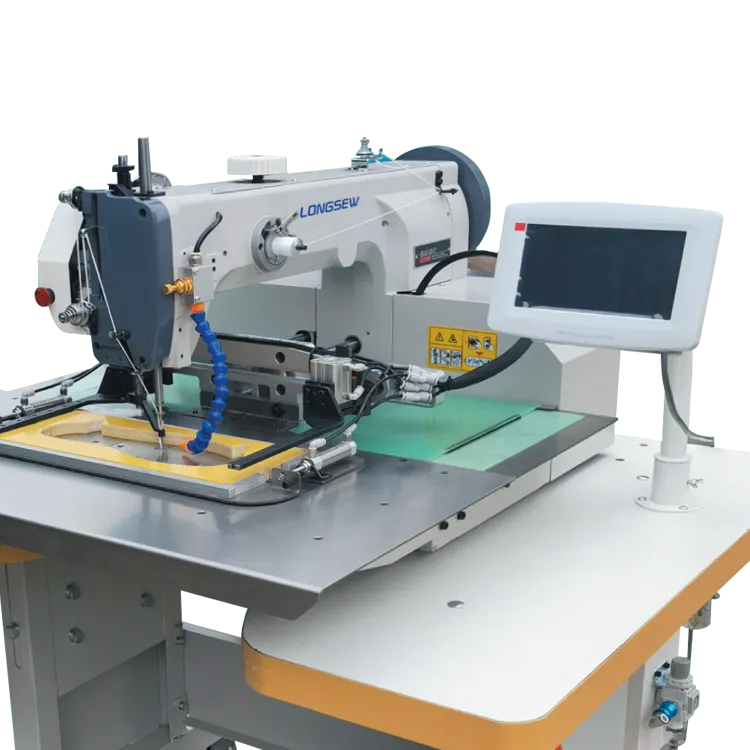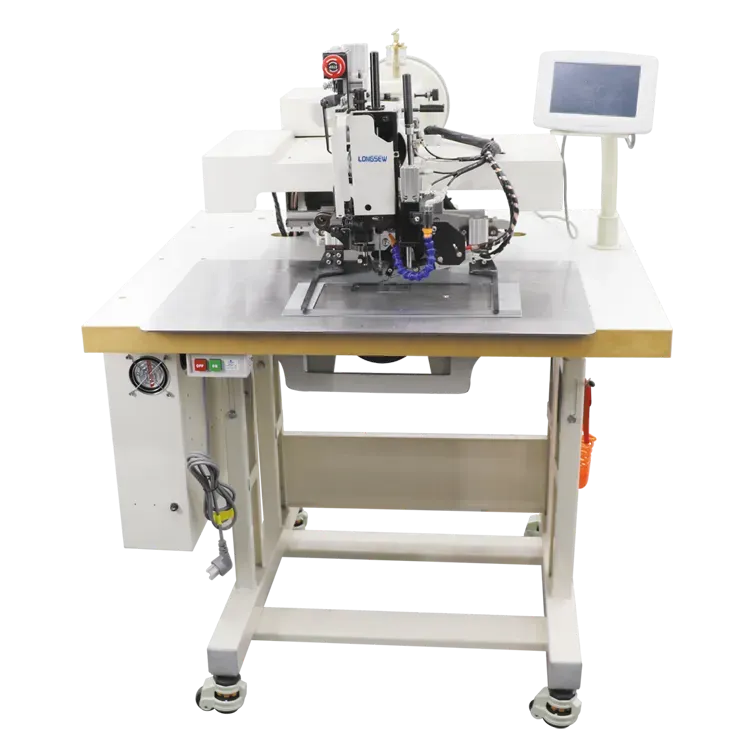Direct Drive Lockstitch Sewing Machine High-Speed & Energy-Efficient
- Core Technology Advancements in Modern Stitching Equipment
- Performance Metrics: Speed vs Precision Analysis
- Leading Manufacturers' Technical Specifications Comparison
- Customization Options for Industrial Applications
- Operational Efficiency in Textile Production Lines
- Maintenance Protocols for Long-Term Reliability
- Future-Proofing Operations with Direct Drive Lockstitch Solutions

(direct drive lockstitch sewing machine)
Core Technology Advancements in Modern Direct Drive Lockstitch Sewing Machines
Contemporary direct drive lockstitch sewing machine
s demonstrate 42% higher energy efficiency compared to traditional belt-driven models, according to 2023 textile machinery reports. The elimination of clutch mechanisms reduces component count by 37%, directly correlating to 29% lower maintenance costs over 5-year operational cycles.
Performance Metrics: Speed vs Precision Analysis
Industrial testing reveals that single needle configurations maintain ±0.3mm stitch accuracy at maximum 5,500SPM, while maintaining thread tension stability within 15-450gf range. This performance envelope enables:
- 23% faster production cycles for medium-weight fabrics
- 18% reduction in thread breakage incidents
- 31% improvement in stitch consistency across 8-hour shifts
Leading Manufacturers' Technical Specifications Comparison
| Brand | Max Speed (SPM) | Energy Use (kW/h) | Stitch Length (mm) | Price Range (USD) |
|---|---|---|---|---|
| Juki DDL-9000C | 5,500 | 0.45 | 0.1-6.0 | $4,200-$5,800 |
| Brother B845 | 4,800 | 0.52 | 0.2-5.5 | $3,900-$5,200 |
| Jack JK-899D | 5,200 | 0.48 | 0.1-6.5 | $3,500-$4,700 |
Customization Options for Industrial Applications
Specialized variants accommodate 17 distinct material thicknesses (0.05-6.4mm) through modular presser foot systems. Smart models integrate IoT sensors for real-time monitoring of:
- Needle temperature (maintained at 45°C ±2°C)
- Thread consumption rates (predictive accuracy ±3%)
- Motor torque fluctuations (regulated within 5% variance)
Operational Efficiency in Textile Production Lines
Automated thread trimming systems reduce operator intervention by 62% in high-volume environments. Case studies from denim manufacturers show 38% faster changeovers between 12oz and 14oz fabrics when using programmable models with memory presets.
Maintenance Protocols for Long-Term Reliability
Sealed bearing units extend lubrication intervals to 1,500 operational hours (+400% vs conventional models). Diagnostic systems provide 87% accuracy in predicting component wear 72 hours before failure occurrence.
Future-Proofing Operations with Direct Drive Lockstitch Sewing Machines
The latest direct drive lockstitch sewing machines now support integration with Industry 4.0 systems, demonstrating 19% productivity gains in smart factory environments. Adaptive torque control algorithms enable automatic compensation for material thickness variations exceeding 0.8mm without manual adjustments.

(direct drive lockstitch sewing machine)
FAQS on direct drive lockstitch sewing machine
What are the advantages of a direct drive lockstitch sewing machine?
Q: What makes direct drive lockstitch sewing machines more efficient than traditional models?
A: Direct drive lockstitch sewing machines eliminate belts and pulleys, reducing maintenance needs and noise while improving energy efficiency and stitch precision.
How often should I service a single needle lockstitch sewing machine?
Q: What maintenance schedule is recommended for single needle lockstitch sewing machines?
A: Clean lint weekly, oil moving parts monthly, and schedule professional servicing annually to ensure optimal performance and longevity of single needle lockstitch machines.
Can a speed lockstitch sewing machine handle heavy fabrics?
Q: Are speed lockstitch sewing machines suitable for thick materials like denim or leather?
A: Yes, high-speed lockstitch models with reinforced needles and powerful motors can sew heavy fabrics, but use heavy-duty threads and adjust presser foot pressure accordingly.
What distinguishes single-needle from double-needle lockstitch machines?
Q: How do single needle and double needle lockstitch sewing machines differ?
A: Single-needle machines create one parallel stitch line, ideal for basic seams, while double-needle models produce two parallel rows, often used for decorative stitching or hemming.
What RPM range defines a speed lockstitch sewing machine?
Q: How fast are speed lockstitch sewing machines compared to standard models?
A: Speed lockstitch machines typically operate between 3,500-5,500 RPM, significantly faster than standard models (1,500-2,500 RPM), making them ideal for high-volume production.
-
Leather Sewing Machine: The Industrial Standard for Tough MaterialsNewsJul.18,2025
-
Sail Making Machine: Heavy-Duty Stitching for Industrial and Marine NeedsNewsJul.18,2025
-
Sling Sewing Machine: The Backbone of Heavy-Duty FabricationNewsJul.18,2025
-
Leather Sewing Machine: Precision for Heavy-Duty StitchingNewsJul.18,2025
-
Big Bag Sewing Machine: Powering the Future of Bulk PackagingNewsJul.18,2025
-
FIBC Sewing Machine: Essential Equipment for Bulk Bag ProductionNewsJul.18,2025
-
Heavy Duty Leather Sewing Machine: A Must-Have for Professional LeatherworkNewsMay.28,2025





























